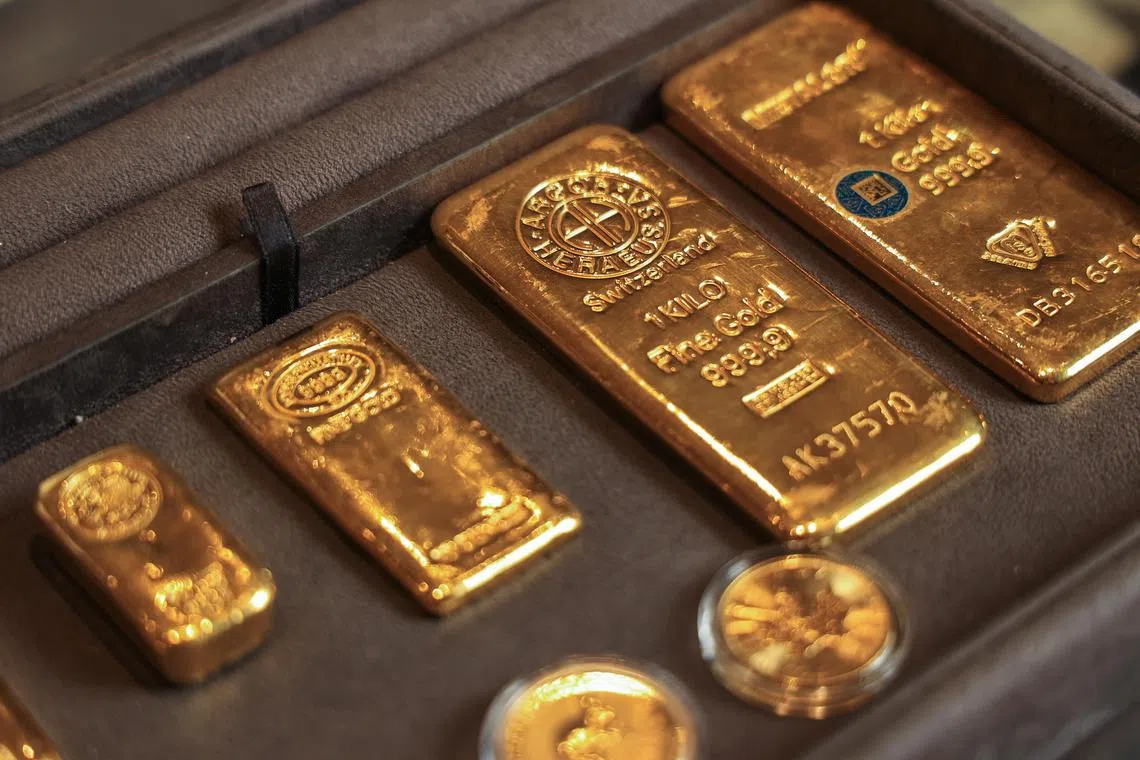Singapore gold investment soars 37% to 2.2 tonnes in Q2 while jewellery demand wanes
Sign up now: Get ST's newsletters delivered to your inbox

The World Gold Council said geopolitical tensions, market volatility and macroeconomic uncertainty will continue to drive investment demand in gold.
PHOTO: LIANHE ZAOBAO
Follow topic:
SINGAPORE - Singapore investors’ appetite for gold remained strong in the second quarter of 2025 with 2.2 tonnes of gold bars and coins purchased, according to the World Gold Council’s latest report released on July 31.
However, demand for gold jewellery in Singapore dropped 8 per cent to 1.5 tonnes, as record gold prices curbed spending power and global jewellery buying slumped to pandemic-era lows.
While the 2.2 tonnes of gold investment in Singapore represent a 37 per cent rise from the same period in 2024, the amount is below the prior quarter’s 2.5 tonnes, which was the highest on the council’s record.
In South-east Asia, gold investment demand in the second quarter continued to grow across Indonesia, Malaysia and Thailand, with double-digit year-on-year increases. However, Vietnam saw a 20 per cent decline compared with the year-ago period.
Globally, total bar and coin investment increased 11 per cent year on year, adding 306.8 tonnes.
Chinese investors led the way with demand reaching 115 tonnes, while Indian investors continued to add to their holdings, with a total of 46 tonnes in the second quarter. European net investment more than doubled to 28 tonnes, while US bar and coin demand halved to 9 tonnes in the second quarter.
Mr Fan Shaokai, head of Asia-Pacific (ex-China) and global head of central banks at the World Gold Council, noted that geopolitical tensions, market volatility and macroeconomic uncertainty will continue to drive investment demand in gold.
Meanwhile, gold exchange-traded fund (ETF) investment continued to drive total demand, with record inflows of 170.5 tonnes over the quarter, compared with outflows in the second quarter of 2024. Global gold ETF demand reached 397 tonnes, the highest first-half total since 2020, noted the council.
On the other hand, central banks and other institutions’ buying dropped 21 per cent on the year to 166.5 tonnes.
“While central bank gold purchases slowed for a second consecutive quarter, demand remained robust, underscoring gold’s enduring appeal as a store of value and portfolio diversifier,” said Mr Fan, who expects central banks to continue to add gold to their reserves in the long term.
Overall, total gold demand reached 1,249 tonnes, including over-the-counter transactions. This was a 3 per cent rise on the year amid a high-price environment, where annualised gold prices stood at US$3,280.4 per ounce in the quarter, based on the report.
The council highlighted that jewellery demand continued to decline, with the consumption volume down 14 per cent on the year, nearing low levels last seen in 2020 during the Covid-19 pandemic.
In particular, jewellery demand in China dropped 20 per cent to 69.2 tonnes, and Indian demand fell 17 per cent to 88.8 tonnes.
However, the global jewellery market in value terms increased to a total of US$36 billion (S$46.7 billion) under record gold prices. THE BUSINESS TIMES

